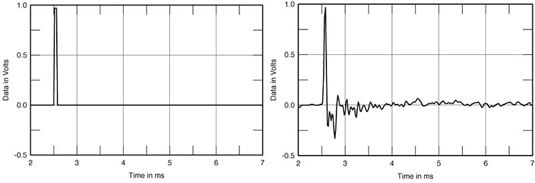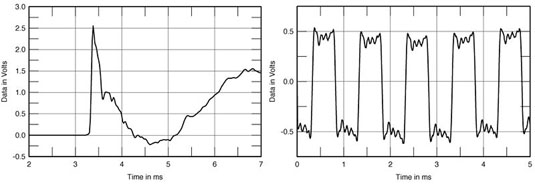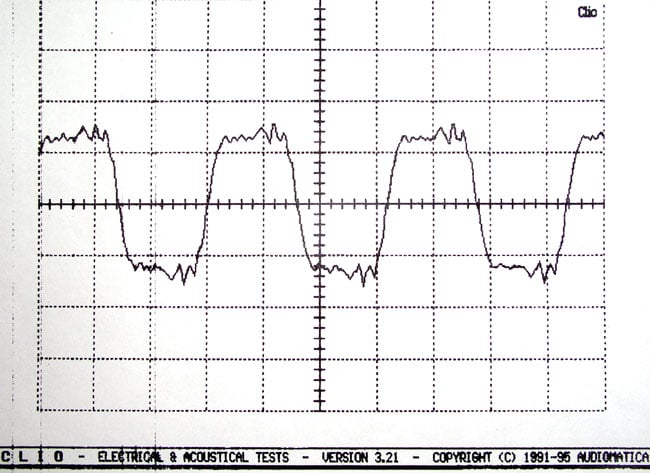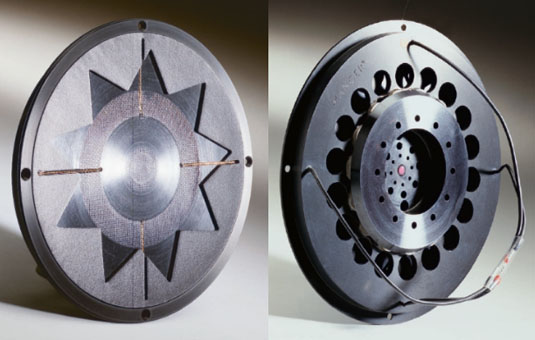This article is more than 1 year old
We need to talk about SPEAKERS: Sorry, 'audiophiles', only IT will break the sound barrier
Design, DSPs and the debunking of traditional hi-fi
Back to square one
At the same time, the HAS is attempting to estimate the size of the sound source from the time constants. Small objects create shorter sounds than large objects. Record a cannon shot, speed the recording up by a factor of 10, and it sounds like a hand gun. Clearly if a loudspeaker has time constants of its own, it will interfere with any time analysis the HAS is attempting to perform.
For example, in the majority of legacy loudspeakers, the acoustic source, which is the place where the sound appears to be generated, actually moves backwards several metres behind the speaker at low frequencies. This does not happen with real sound sources such as tympani.

Quad ESL-63 electrostatic speakers were costly but delivered impressive timing accuracy: the input pulse signal (left) is used to generate the impulse response of the speaker (right)
Only after the direction and size of a source has been determined does the HAS revert to the frequency domain to give us pitch and harmonic information. When the ear is working in the frequency domain on a sound having stationary statistics, the phase relationship between different harmonics can be changed and those changes will not be detected.
With this in mind, most speaker designers incorrectly argue that time accuracy is never necessary in a loudspeaker. They are simply not aware that time accuracy is vital when the ear is working in the time domain. Their expertise lies in making coffins for monkeys. Think what would happen to a RADAR set if the signals were not time accurate.

Quad ESL-63 step response is calculated from the impulse response above and performs well – albeit with some bass emphasis. The square wave output is a different class over conventional loudspeakers
One simple way of checking a signal path for time accuracy, or phase linearity, is to see how it responds to a square wave. A square wave only remains square if the Fourier components maintain the same time relationship. Amplifier designers routinely test with square waves to prove the quality of their designs. Loudspeaker designers never test with square waves because they maintain it’s not necessary. Self-evidently one group is in denial.
The great majority of legacy loudspeakers will fail a square wave test spectacularly. Creating a time accurate speaker that will reproduce a square wave is only a matter of finding engineering solutions to the problem. The image above shows the acoustic output from a square wave input of an experimental time-accurate speaker I designed about 15 years ago. The difficulty is not in doing it but in realising it is necessary.

John Watkinson's experimental speaker design square wave test output
Since air cannot sustain a pressure change, the step response of a time accurate loudspeaker should consist of a sharply rising leading edge followed by decay back to ambient pressure. Again, most legacy loudspeakers fail this test spectacularly, displaying a step response like an empty furniture truck hitting a pothole and performing a comprehensive demolition job on the input waveform.
One of the few transducers that exhibits a good step response – and consequent realistic reproduction of percussion – is the electrostatic loudspeaker. Unfortunately, for good performance, these must be large and sited well away from walls and this is not appropriate for many domestic circumstances. Another is the moving coil device developed by Josef Manger that was specifically designed with accurate time response to meet the imaging requirements of the human auditory system.

Manger MSW transducer: designed with a very fast rise time and low linear and non-linear distortion
Since disturbed air pressure leaks away back to ambient, it should be clear that at low frequencies there is more time for this to happen. To generate low frequency sounds, a significant displacement of air is necessary, obtained by a surface having a large area moving an appreciable distance.
